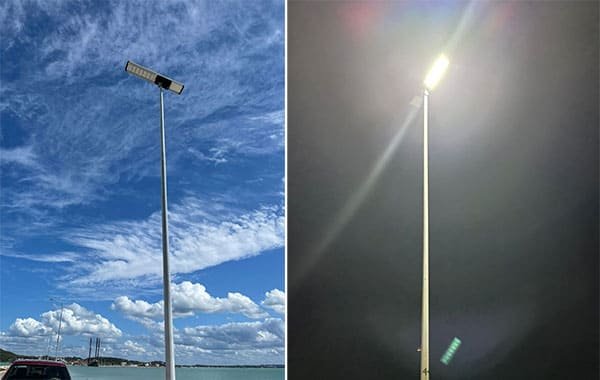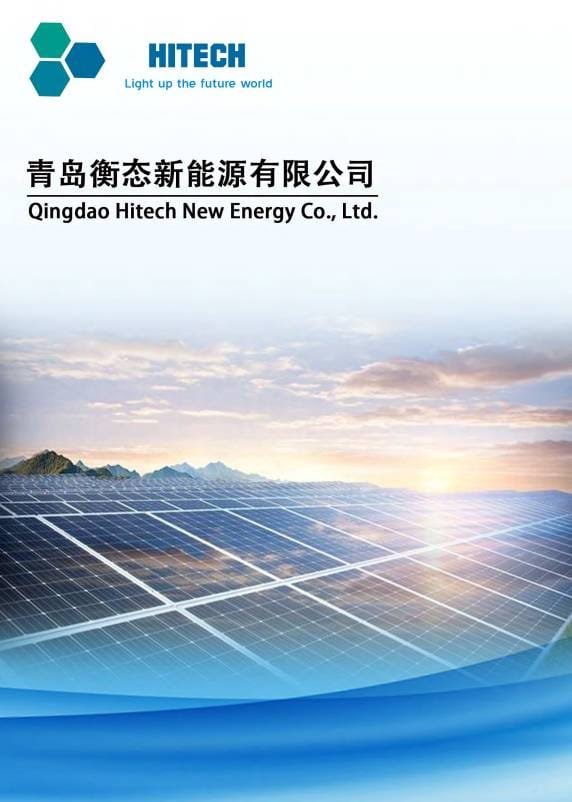Are you tired of never-ending electric bills and costly maintenance for your street lighting systems?
Commercial solar street lights can eliminate electricity bills entirely and cut maintenance costs by up to 70%, saving thousands of dollars over their operational life.
That’s why more municipalities, business parks, and private operators are making the switch. But to really understand the savings, we need to go deeper into each cost factor.
What Are Commercial Solar Street Lights and How Do They Work?
Ever wondered how solar lights work without being plugged into anything?
Commercial solar street lights use solar panels, batteries, and LEDs to operate independently of the grid, making them a self-sustaining solution for outdoor lighting.
These lights consist of:
- Solar Panels: Collect sunlight during the day.
- Battery: Stores the energy for nighttime use.
- LED Light: Consumes very little energy.
- Controller: Manages power input/output.
They’re used in municipal projects, private compounds, schools, campuses, parking lots, and industrial zones. No wiring means no dependency on local utilities — especially useful in remote or unstable grid regions.
What Are the Main Costs of Traditional Street Lighting?

Trenching and cabling add more cost than you think.
Traditional street lighting systems include high installation costs, recurring electricity bills, and frequent maintenance — which adds up significantly over time.
Let me break this down:
| Cost Type | Description |
|---|---|
| Installation | Requires trenching, wiring, poles, and electrical hookup (avg. $3,000/light) |
| Electricity Usage | Constant power draw, often 100W–250W per lamp, billed monthly |
| Maintenance | Bulb replacement, wiring faults, fixture corrosion |
Over 10 years, maintaining a grid-powered light could easily exceed $6,000 per unit, not even counting electricity.
How Much Do Commercial Solar Street Lights Save on Electricity Costs?
Electric bills don’t seem much monthly — until you multiply them.
A single solar street light can save over $240/year on electricity alone, and over $48,000 across 20 lights in 10 years.
Let’s say a 150W traditional light runs 12 hours a night:
- 150W x 12h = 1.8 kWh/day
- 1.8 kWh x 365 = 657 kWh/year
- Electricity cost: $0.15/kWh (average global)
- Annual energy cost per light = $98.55
Now multiply by 100 lights and you’re saving almost $10,000/year just in electricity.
Maintenance and Operational Savings from Commercial Solar Street Lights

Tired of dispatching maintenance crews every few months?
With no underground wiring and long-life LEDs, solar lights drastically reduce operational costs — especially over a decade.
Here’s how the savings add up:
| Feature | Solar Lights | Traditional Lights |
|---|---|---|
| LED Lifetime | 50,000–100,000 hours | 10,000–20,000 hours |
| Wiring Issues | None (off-grid) | Frequent due to aging/corrosion |
| Maintenance Visits | Once every 5+ years | Twice yearly or more |
| Battery Replacement | Once every 5–7 years (if needed) | N/A |
Real Case:
A town in West Africa switched 150 lights to solar. Over 10 years:
- Saved ~$15,000 on energy
- Saved ~$20,000 on technician dispatches and repairs
- No trenching or digging-related accidents
That’s over $230 saved per light per year, not even counting energy costs.
Initial Investment vs Long-Term Savings: Payback Period for Commercial Solar Street Lights
It costs more upfront. But the payback is faster than you’d think.
On average, commercial solar street lights pay for themselves in 2–4 years and continue generating savings for over a decade.
Example Comparison (per light):
| Cost Category | Traditional Light | Solar Light |
|---|---|---|
| Upfront Cost | $3,000 | $4,500 |
| 10-Year Electricity | $1,000 | $0 |
| 10-Year Maintenance | $800 | $200 |
| Total 10-Year Cost | $4,800 | $4,700 |
ROI Timeline:
- Small projects (20–50 lights): Break even in 3–4 years
- Large installations (100+): Break even in 2–3 years due to bulk discounts
After the payback point, every year is pure savings.
Additional Financial Benefits of Commercial Solar Street Lights

Saving money is one thing — avoiding risks is another.
Solar street lights qualify for green energy incentives and reduce long-term insurance and energy volatility costs.
Key Benefits:
- Government Rebates: Up to 30–50% off initial cost
- Lower Insurance: Fewer fire/electrocution risks
- No Utility Contracts: Freedom from rising tariffs
If you’re in Uganda, Nigeria, or Ghana — countries now offering renewable infrastructure tax incentives — you may cut the upfront price by up to 40%.
Environmental Savings Also Translate to Financial Value
Saving the planet can boost your bottom line.
By switching to solar, your organization may qualify for carbon credits, ESG boosts, and reputational gains with investors and governments.
Environmental ROI:
- Each light saves ~0.5 metric tons CO₂/year
- Potential to earn carbon credits (varies by region)
- ESG Scores: Solar adoption enhances compliance and public image
Even if you don’t sell credits, improved ESG reports can attract more contracts or clients — especially for public bids.
Real-World Examples: How Much Do Commercial Solar Street Lights Save in Practice?

These are not theories. Here’s what real users save.
Cities, industrial parks, and private campuses report 50–70% total savings after adopting solar lighting systems.
Examples:
| Project | Lights Installed | 10-Year Savings | Location |
|---|---|---|---|
| City Downtown | 120 lights | $72,000 | Ghana |
| Industrial Park | 45 lights | $29,500 | Nigeria |
| University Campus | 60 lights | $38,700 | Uganda |
One of our clients in Togo replaced 50 grid-powered lights with solar. He recouped his investment in 2.5 years and now saves over $9,000 annually.
Factors That Affect How Much Commercial Solar Street Lights Save
Not all installations save the same amount.
Savings vary based on location, product quality, and maintenance planning — but even worst-case scenarios beat grid costs.
Key Variables:
- Sunlight Hours: More sun = more energy. Uganda averages 5.5 hours/day.
- Battery Quality: Good batteries last 5–10 years without replacement.
- Wattage and Efficiency: Over-spec’d systems waste energy and cost more.
- Location Accessibility: Remote areas benefit most from no trenching needs.
Are Commercial Solar Street Lights Worth the Investment?

Still debating? Here's the summary.
If you operate in sunny regions with rising energy prices, commercial solar street lights are not just cost-effective — they’re the smarter investment.
Switching offers:
- No monthly electric bills
- Minimal maintenance
- Fast ROI (2–4 years)
- Sustainable and scalable systems
For business owners and municipalities, the numbers speak for themselves.
Conclusion
Commercial solar street lights can save thousands per light over their life span by eliminating energy and reducing maintenance costs. Evaluate total ownership costs — not just purchase price — and you’ll see why the solar switch makes financial sense.
FAQ
Q1: How long does it take for commercial solar street lights to pay for themselves?
Typically 2 to 4 years, depending on electricity costs and system size.
Q2: Do solar street lights work during cloudy days or at night?
Yes. They store solar energy in batteries, which power the lights through cloudy weather and overnight.
Q3: Are there grants or subsidies available for commercial solar lighting?
Yes. Many countries offer renewable energy incentives, tax rebates, or funding programs for solar infrastructure.


